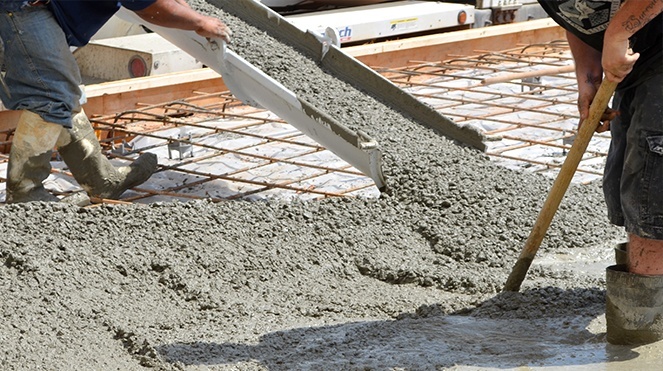Posted on July 21, 2022
What is the #1 industrial product produced by humanity every year? The answer is concrete – an estimated 10 billion cubic yards worth, weighing 20 billion tons. Unfortunately, this production comes at a price – roughly 2 billion tons of GHG emissions. Governments and industry insiders target these excess emissions in the ongoing quest for carbon neutrality.
Artificial Intelligence and the Internet of Things
New technologies often take decades to evolve. First, the concept leads to prototypes and pilot projects. First, there is gradual acceptance, then, widespread use. Such is the case with both Artificial Intelligence (AI) and the Internet of Things (IoT).
Artificial Intelligence
The idea of intelligent machines dates to the post-WWII era.In 1950, Alan Turing published Computing Machinery and Intelligence. The mathematics genius describes a means for constructing and testing intelligent machines. In 1997, IBM’s Deep Blue defeated Grand Master Garry Kasparov in a chess match. It was an impressive, yet early display of AI.
Internet of Things
Wireless communication makes IoT possible. In 1898, Nikola Tesla patented a small radio-controlled boat. In 1926, his vision for the future proved to be remarkably prescient, “When wireless is perfectly applied, the whole earth will be converted into a huge brain.” He believed a person would access this network using a phone carried ”in his vest pocket.”
The Electronic Product Code (EPC) appeared in 1999. It was a global RFID-based item identification system - an alternative to UPC bar codes. There was a presentation at Procter & Gamble concerning the linking of RFIDs to the Internet. It was entitled, “The Internet of Things.” Today, it is widely known by the acronym, IoT.
Applications in cement and concrete
Embedded sensors, data transmission and data analytics extend the lifespans of concrete structures. In the past, problems often remained hidden until they spun out of control. Thanks to IoT, what was hidden is more often in plain view.
Many of the industry’s current reductions in CO2 and other greenhouse gasses result from:
More efficient cement plants
More carbon-friendly concrete mixes
Longer lifespans for roads and buildings
Regarding the latter, a wide variety of sensors and analytics tools will transform how structural health monitoring is done. They will “make monitoring and investing in concrete infrastructure more efficient.”
Concrete infrastructure monitoring addresses:
Corrosion
Strain/stress/crack
Temperature
Humidity
pH
Concrete sensors must deliver consistent data transmission. Modest data transmission needs allow for the deployment of low-power wide area networks (LPWANs).
Case study: Giatec Scientific
Giatec Scientific is a specialist in wireless concrete sensors and AI. Giatec's SmartMix is a new artificial intelligence (AI) tool for optimizing concrete mixes. The company invested $3 million and three years in the development of SmartMix. Giatec describes it as the “world’s first web-based AI program” for the industry. It compiles data received from Giatec wireless sensors embedded in concrete projects. SmartMix also analyzes a project’s specifications. This yields an ideal mix that meets spec while reducing cement use.
Just how effective is this new AI tool? If it was adopted worldwide, Giatec estimates a potential 20% industry-wide reduction in GHG emissions. That is a potential reduction of 400 million tons – equivalent to the amount produced by 110 million passenger vehicles.
Types of Concrete Sensors
Of course, concrete sensors must be extremely durable and reliable. The ideal device requires little or no maintenance. It needs to supply its own power, access a reliable power source or have dependable battery power.
Fiber optic sensors offer key advantages. They resist wide variations in temperature. They also resist electromagnetic interference, and they offer excellent signal strength. This type of sensor is easily added to buildings and roads as they are constructed.
Moisture sensors detect water intrusion responsible for corrosion and cracking. Temperature sensors track the curing of freshly placed concrete. They will also allow for the calibration of lifespans. They'll also help to determine appropriate inspection intervals.
Piezoelectric sensors detect stresses, pressure, and cracking. Electrochemical sensors excel at detecting chloride-related corrosion. They can monitor the health of rebar reinforcement embedded deep in the concrete. pH sensors warn of excess acidity that threatens concrete’s strength.
Case study: Cincinnati-area concert venue
Ovation is a 25-acre mixed-use development featuring a major indoor/outdoor concert venue. It is in Newport, KY, across the Ohio River from Cincinnati. The project called for multiple large pours of high performance, low-shrinkage concrete. It would maximize durability and strength, while reducing cracking.
The contractor faced a need for an aggressive two-day, 3000 psi maturation. Maturity sensors confirmed in-place concrete strength. These sensors are an excellent alternative to traditional field break test cylinders, in part because the latter cannot duplicate field conditions. The heat generated by a large concrete mass is one example. Also, strength estimates may be conservative or inaccurate. Lab testing delays the process. In turn, this slows construction progress.
Embedded wireless sensors deliver real-time data about strength and temperature. Information is automatically uploaded to the cloud and made available via mobile app. Such sensors appeal to contractors who covet their independence. These industry professionals install the sensors and monitor results on their own devices.
About PACA
IoT and AI are two acronyms that are increasingly important. In Pennsylvania’s concrete industry, there’s another acronym: PACA. The Pennsylvania Aggregates and Concrete Association keeps its members and the general public informed about the latest news.
We welcome questions about your upcoming project. Please contact us at your convenience.

